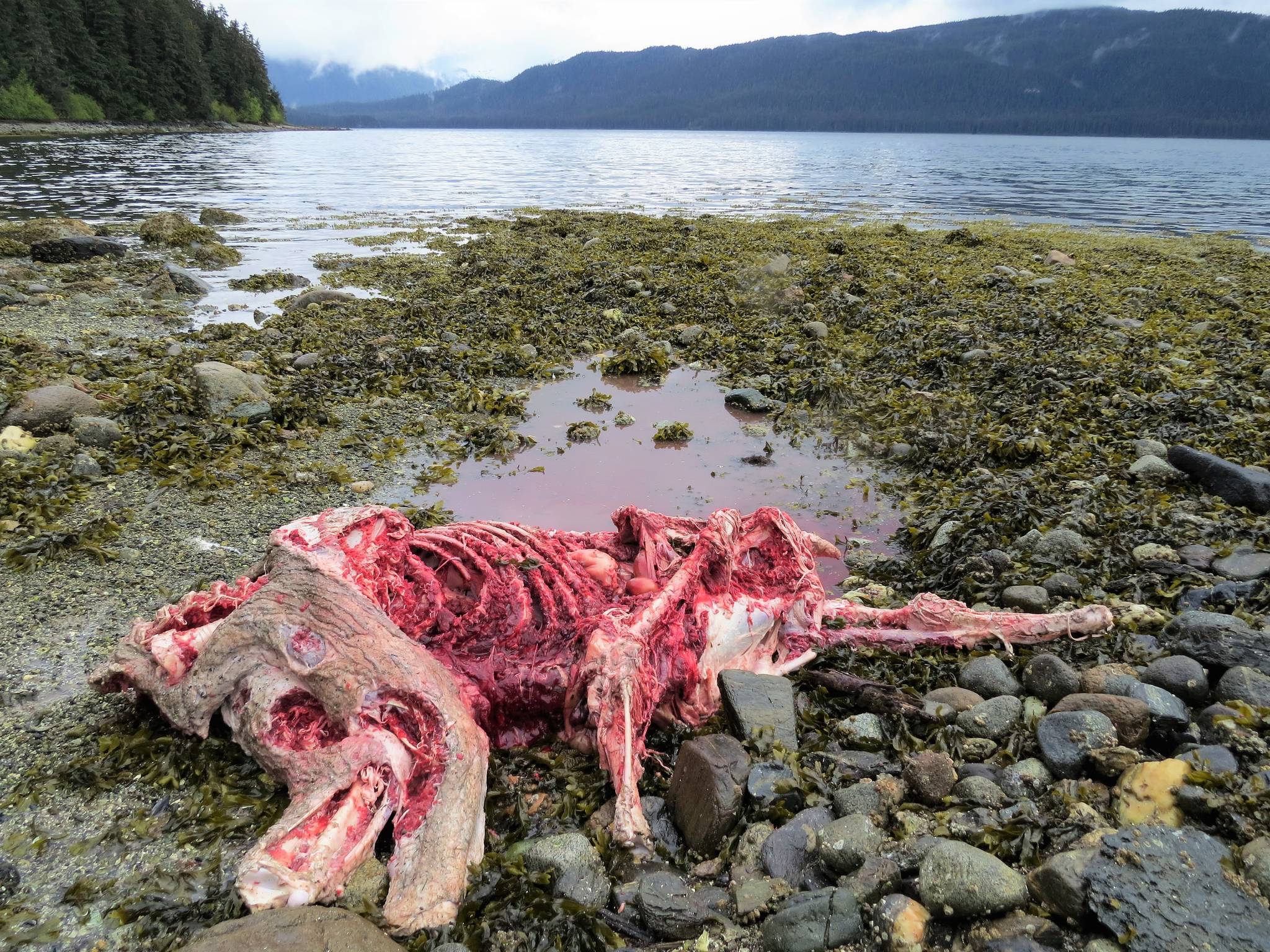The first bear I remember was lying in a salmon stream on Admiralty Island, reduced to bones and tendrils of flesh. At the time — I was 4 or 5 — I wasn’t sure what I was looking at. Giant trees rose on each side, offering the illusion of impenetrable walls. A bald eagle glided above and landed on a logjam. Ravens spoke their ancient language from the boughs of Sitka spruce trees. Pink salmon filled the stream and struggled to spawn. I left the bear and waded downstream toward a cabin where my family was staying.
A salmon who’d just laid the last of her eggs floated belly up. I threw rocks at her as she gasped and drifted down the current toward the ocean.
I found my dad and took him back to the carcass.
“Brown bear,” he said, cradling his rifle and studying the salmonberry bushes.
It was small, likely a 3-year-old that had been run off that spring by its mother. It’s easy to imagine the little bear venturing from the estuary, slowly plodding upstream, surrounded by dark woods. Pink salmon exploded the water with each step; there were so many that the bear likely cherry picked, stripping skin and gulping roe. Above the creek on a day bed, hidden in the brush, had been an adult bear. Instinctually, it leapt into the stream and attacked. Because of where the carcass lay, it’s likely the killer was one of the more dominant bears on the creek. Generally, when a bear kills, it drags its prey into the brush where it can feed with less worry of having its meal disputed.
There was also the chance someone had just wanted to kill a bear. It was only few bends in the creek up from the cabin. Add alcohol and the seeming unaccountability of Admiralty’s rainforest, and it’s not too hard to imagine someone pulling the trigger.
Or maybe someone had seen the bear at close proximity and overacted.
Or maybe the little bear had approached a person. A 100-pound sub-adult can maim or kill as easily as a 1,000-pound bear. Young bears are more likely to mess with people. The bear could have huffed or tried to bully someone and, after several warnings, been shot. Not wanting to do the paperwork, the shooter left it in the creek, knowing other bears and eagles would make quick work of it.
Regardless of who killed the bear, other animals had rapidly consumed it. Even the stream’s current and the falling rain had encouraged the blood from flesh and the flesh from bone. In the shallows, on the gravel bars and on the banks nearby, were the carcasses of countless decomposing salmon. Even the living salmon, splashing against the current, jockeying for position and digging out redds, were in the process of dying.
I stood feeling the surge of life with little understanding of the bear, salmon or death. Maybe — three decades later it’s hard to remember — I suffered a glimmer of awareness laced with fear. I imagined a bear crashing through the woods, engulfing me in its jaws. I imagined how even if I escaped the bear, eventually — like the spawning salmon — my blood, flesh and guts would still be freed of my bones and carried away from the thing I thought was me.
Maybe I began to understand how pitiful and mean I had been to throw rocks at that spawned out, gasping salmon.
We left the bear where it lay. I followed my dad downstream, staring up at the brush and alders lining the banks, where bear trails led to places I couldn’t yet imagine.
• Bjorn Dihle is a Juneau writer. His first book is Haunted Inside Passage: Ghosts, Legends and Mysteries of Southeast Alaska. His second book Never Cry Halibut: and Other Alaska Fishing and Hunting Tales will be published April 3. You can contact or follow him at facebook.com/BjornDihleauthor.

